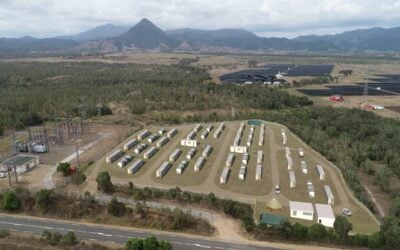
PHoTowalX / Flickr.
The power markets of Europe continue their shift to 15-minute settlement periods today (30 September), a reform which could increase the revenue opportunities for energy storage and other flexibility resources.
Today is the go-live date for a shift from 60-minute to 15-minute settlements in the day-ahead segments of the European Union’s (EU’s) power markets, following a similar shift over the past year for the intra-day market.
However, the day-ahead market is by far the larger of the two. On the European Power Exchange SE’s EPEX SPOT market, which covers most of the continent, a total of 542.1TWh was traded on its day-ahead segment in 2023 versus 175.7TWh on its intra-day, more than three times’ higher.
Day-ahead auctions today are now in 15-minute MTUs (Market Time Units), allowing for products of 15, 30 and 60 minutes, for delivery tomorrow (1 October). That means the reform multiples the total number of price intervals from 24 (for each hour of the day) to 96 per day.
Try Premium for just $1
- Full premium access for the first month at only $1
- Converts to an annual rate after 30 days unless cancelled
- Cancel anytime during the trial period
Premium Benefits
- Expert industry analysis and interviews
- Digital access to PV Tech Power journal
- Exclusive event discounts
Or get the full Premium subscription right away
Or continue reading this article for free
James Knighton, senior consultant at research and consultancy firm LCP Delta said on LinkedIn that it will mean improved integration of renewables, aligning closer to actual generation and reducing the risk of imbalance penalties.
He also said that it would mean “more extreme prices, leading to increased day-ahead spreads. One of the most interesting aspects of 15-minute pricing will be the impact on BESS (battery energy storage system) revenues.”
Simon Risanger, CEO of power asset management platform Versiro, said it would lead to a better representation of the physical energy system, reduce imbalances and their costs, better accomodate renewable variability and improve price discovery on the true value of flexibility and scarcity.
Neither explicitly said it would increase revenues for BESS, but the implication is that it is quite possible, since energy storage thrives off scarcity and a need for flexibility, and many in the BESS industry say that energy markets to-date have yet to accurately value the role it can play.
Earlier in the month, Shubham Pandey, an energy analyst for UK-based renewable services provider U Energy, said that flexible generation, BESS, demand-side response (DSR) and smart loads stand to benefit.
“Flexible generation / storage Batteries, fast ramping gas plants, peakers, pumped hydro, etc. will be able to capture value from intra-hour price swings. The more granular the interval, the better small assets can respond and monetise their flexibility,” he said, also posting on LinkedIn.
“Demand Side Response (DSR) / Smart Loads: Loads which can shift demand (e.g. industrial, commercial, smart homes) benefit: fine-grained pricing signals mean paying more precisely for when power is consumed, and being rewarded for reducing demand at high price periods. Companies investing in load flexibility can earn new revenue streams.”
He added that renewables paired with storage or good forecasting will be able to better align production, avoid penalties and even participate in the short interval markets.





